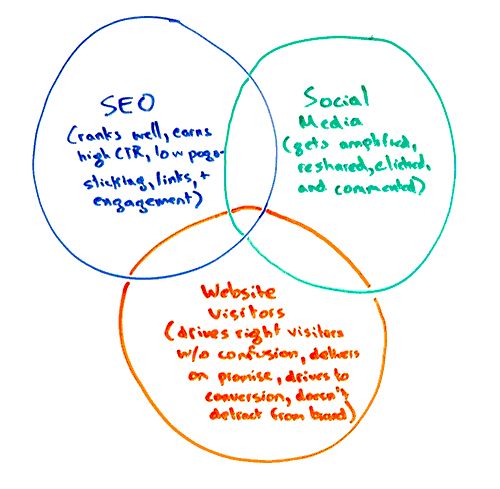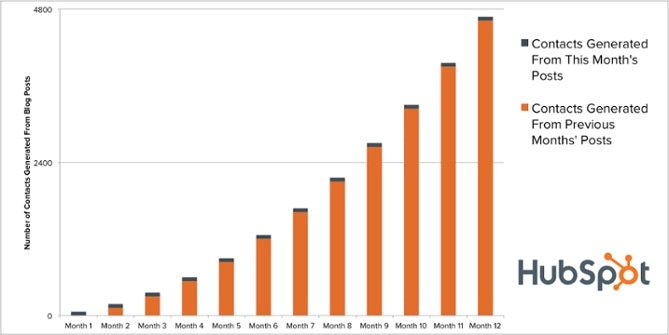The Content Marketing Weekly explores the latest industry insights you need to know. This week, we feature the art of headline writing, the travesty of bad content and the benefits of going big with your content – even if you’re small.
Writing Headlines That Serve SEO, Social Media, and Website Visitors All Together
As any marketer can tell you, it sometimes feels like you’re serving many different masters. Firstly, you have to produce fresh content that’s optimized for search engines. But, that content must also be shareable for social media – those two goals aren’t always aligned. Lastly, the average reader who comes to your site must also derive value from the content you post. You know, in a human way.
In this Whiteboard Friday from Rand Fishkin at Moz, we see how it’s possible to accommodate all of these interests without having to constantly rewrite headlines or produce content that’s siloed into adjacent tracks.
Writing a great headline is one of the foundations of content marketing – it’s how you achieve high click-throughs. Here’s how Rand suggests reconciling disparate content marketing headlines:
- Decide your primary audience/goal/channel.
- Optimize the headline for the “most-demanding channel.”
- Produce your baseline headline.
- Tweak headline slightly for clickability.
- Merge 3 & 4 into one headline and add in appropriate keywords.
Click here for the full explanation of how this works.
9 Types of Content That Will Always Fail
Content marketing has grown up a lot over the years. It’s no longer the snooty pre-teen desperately seeking attention from trumped-up search engine algorithms. No, content marketing is a mature adult that looks back at its wayward days and laughs.
Yet old habits die hard, as we see from Katy Katz in Search Engine Journal.
There are plenty of content types that turn people away. Avoid content that:
- Says nothing … or too much.
- Is blocky and text-heavy.
- Is unmerited or uncited.
- Is only about your company.
- Is boring.
- Is insulting.
- Focuses on the wrong target audience.
- Is clearly written for bots.
- Is way too salesy.
Not seeing the return you want from your #ContentMarketing efforts? Here are 3 reasons your content probably sucks: https://t.co/utzuN0i9cK pic.twitter.com/juugS5CtRx
— Brafton (@Brafton) August 10, 2017
While we all fall victim to some of our lazier content marketing tendencies, we should at least attempt to do without content that provides no value. And we all know value when we see it.
Read on to learn how to revamp bad content.
Size Doesn’t Matter: How a Small Team Can Win Big in Content Marketing
“We don’t have the budget.”
“We don’t know where to begin.”
“We can’t compete with established brands.”
These are phrases marketers commonly hear, and for the most part, they’re inaccurate. With the right mindset, the right goals and the right tools, even the smallest brands can compete on a more level playing field with the top dogs.
That’s what we explore in Julia McCoy’s article on Search Engine Journal.
Her journey began six years ago with a self-coded website launched with $75. Fast forward, her company now has more than 5,000 clients.
The secret?
Well, it’s mostly honing in on your core specialty first, then branching out several years down the line once you’ve developed a following. Too often, marketers jump into the content world with big proclamations of winning first-page rankings and producing content at scale. Yet they typically lack the execution or foresight to make this happen.
McCoy also emphasizes the need for marketers to stick to a schedule. If that means one blog post a week, that’s fine. If it means once every two weeks, run with it. It really comes down to a time-in time-out equation.
Identify your niche, capitalize on low-hanging search opportunities and dedicate yourself to consistent, quality content. Your strategy can become more sophisticated once you’re established – right now, you just need a foot in the door.
8 Effective Examples of Quizzes in Content Marketing
Interactive content is becoming more of a necessity. No longer can websites be populating with only text, stock photos or salesy videos. You need content that starts two-way conversations, helps you collect visitor data and enables you to target your core site personas.
One of the best ways to accomplish all of the above is through quizzes.
In this Econsultancy piece, we see some of the top quizzes produced recently by brands like Warby Parker, Disney and Airbnb.
The great thing about content that relies on user input is that every question answered is a key piece of data intelligence. This information can then be used to create personalized user experiences in subsequent content, a process which snowballs into a strategic, refined model of content production.
Oh, and, quizzes are a lot more fun than reading a bunch of text.
Hold tight ‘til next Friday when we’ll have another edition of content marketing insights delivered right to your inbox.








